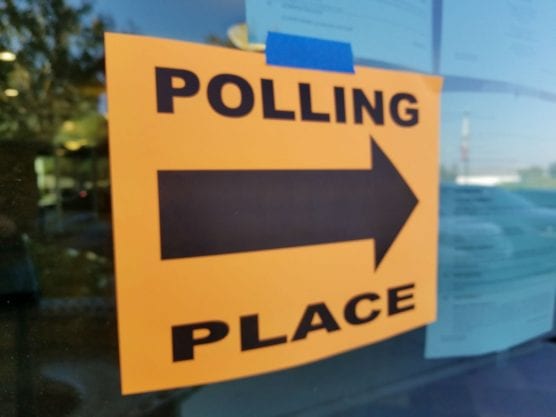Recent California voter registration figures show that Republican congressional candidates vying to take back their seats from Democrats, including in the 25th Congressional District, might not be facing an easy feat.
The numbers released by Secretary of State Alex Padilla, 154 days before the primary election in March 2020, tell a familiar pattern: Democrats are slightly gaining in percentage of registered voters, the percentage of GOP voters is slightly declining and unaffiliated voters, or those registered as “no party preference,” continue to grow.
As of Oct. 1, the 25th Congressional District, which represents the Santa Clarita, Simi and Antelope valleys, had 411,244 voters, according to the state’s voter registration data. Nearly 38% of voters registered as Democrat, 32% as Republican, 3.19% as independent and 25% as no party preference.
At the time of the 154-day report of 2016, Republicans (37.11%) held a lead over Democrats (36.53%) by just more than 2,000 registered voters, or nearly 1%, while no party preference tallied at 21% and independents at 3.13%.
On a more local look, this year there are close to 137,000 people registered in Santa Clarita alone, with Democrats tallying 48,000 voters, Republicans just behind at 46,000, independents at 4,400 and no party preference at 34,200.
In 2016, about 24,000 fewer people were registered 154 days before the primary election in June, with about 43,700 Republicans, 37,000 Democrats, 3,600 independents and 25,200 registering with no party preference.
The figures are also broken up by county districts — SCV falls under Los Angeles County’s 5th District. A total of 1.16 million people registered. More than 480,000 people registered as Democrat, 300,000 as Republican, 317,000 as no party preference and 31,000 as independent.
A Democratic lead was also evident in Democratic Assemblywoman Christy Smith’s 38th District and Republican State Sen. Scott Wilk’s 21st District, with a registration percentage reaching in the mid-to-high 30s for Democrats and Republicans in the lower 30s.
These figures generally reflect a pattern occurring across California, according to Lena Smyth, a political science professor at College of the Canyons.
“What you’re seeing here is a reflection of what’s happening statewide in California,” she said. “Over the last 10-plus years, you’re seeing Republican registration on the decline and the Democrats stayed pretty flat and an increase in the no party preference.”
Part of the Democratic Party’s slight rise in voter registration percentages stems from a demographic shift in the district as younger families move north into the area, she added.
Another aspect is attributed to “Democrats (being) better at registering people than Republicans,” said Joe Messina, communications director for the 38th Republican Central Committee.
That’s “driven by a combination of years of work by local volunteers and by population shifts in the district,” according to Chad Kampbell, president of the local Democratic Alliance for Action.
In 2018, seven California GOP congressional incumbents lost their seats to Democrats during the midterm elections, including in the 25th Congressional District, where former Rep. Katie Hill, D-Agua Dulce, unseated Republican Rep. Steve Knight, in a seat that was held by Republicans for nearly 30 consecutive years.
Days after Hill’s sudden resignation last month amid an ethics investigation into alleged improper relations with staffers, Knight announced his campaign to represent the district once again. He is joined by four other GOP candidates in the race and seven Democrats, including Smith.
Meanwhile, both parties will court the voters who aligned with no party at all, which will be the ones who decide the 2020 election, said Smyth.
“Statewide and in the 25th (Congressional District), you see both parties courting the independent voters,” she said. “Even though they aren’t registered with a particular party, Republicans will target those leaning more conservative and the same for Democrats who lean more liberal. Both parties are trying to get as many to the polls.”
Like this:
Like Loading...
Related





 Tweet This
Tweet This Facebook
Facebook Digg This
Digg This Bookmark
Bookmark Stumble
Stumble RSS
RSS


























REAL NAMES ONLY: All posters must use their real individual or business name. This applies equally to Twitter account holders who use a nickname.
0 Comments
You can be the first one to leave a comment.